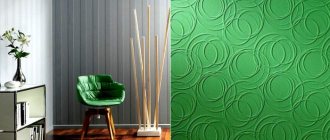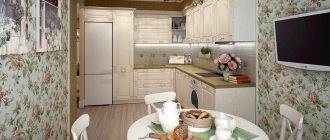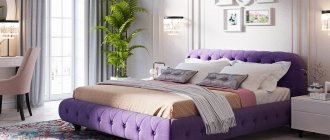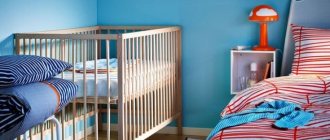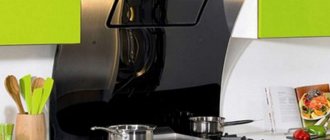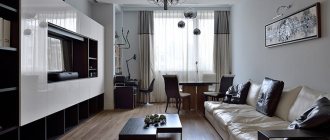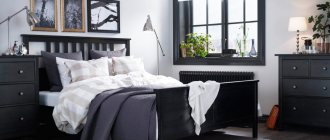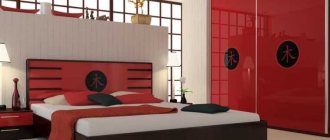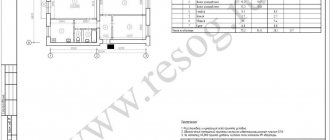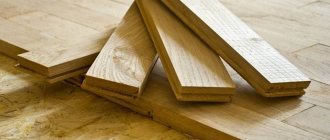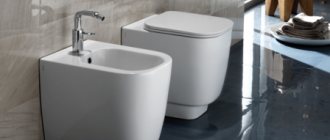The assortment of the modern building materials market is constantly updated and replenished with various new building materials. Gradually, many new products are gaining popularity among consumers. This happened with non-woven wallpaper.
Non-woven wallpaper appeared on the finishing materials market relatively recently, but is already in great demand among consumers.
Non-woven fabric, what is it?
To make non-woven fabric, special modified paper fibers and various additives are used. The viscous substance is processed, pressed, and various special components and impregnations are added. The secret of making non-woven fabric from each manufacturer is strictly individual and secret.
The components are not disclosed and are kept strictly confidential. The reason for such secrecy is that one or another component can completely change the characteristics and properties of non-woven fabric.
Presentation in different styles
Non-woven fabrics are suitable for decorating interiors in various styles, but the following are currently considered the most popular stylistic trends.
Classical
The style has been popular for many centuries. Currently, on store shelves you can find a wide variety of golden-colored non-woven wallpapers with various monograms, ideally emphasizing the taste of the interior owners who have given them preference.
The photo shows companion wallpaper (non-woven with stripes and vinyl with monograms) in the interior of a living room in a classic style.
Provence
Delicate, romantic interior, immersed in a huge amount of daylight and small floral print.
Scandinavian
Refers to laconic styles, characterized by a large number of light shades in the interior.
The photo shows non-woven seamless wallpaper in the Scandinavian style, the joints on the walls are not visible.
Modern
It is distinguished by the presence of various geometric patterns that can be combined and bold colors. It will fit perfectly into the interior of a person with perfect taste.
The photo shows a bedroom in a modern style with wall decoration with non-woven photo wallpaper.
Nautical
A calm style ideal for bedrooms, nurseries and bathrooms. Creates a feeling of peace and tranquility in the interior.
Properties of non-woven fabric
This material has found its application in the manufacture of various materials. The popularity of non-woven fabric is due to the distinctive properties of the material:
- Non-woven fabric is stronger than regular paper.
- It is resistant to fire.
- Cannot be deformed.
- Increased resistance to contamination.
- When dried, the material does not lose its original data.
- It is wear resistant.
Non-woven fabric, thanks to its excellent technical characteristics, is widely used in various fields of industry, medicine, and so on. This material has replaced ordinary paper in the production of wallpaper.
Main characteristics
The main advantage of using non-woven wallpaper is its durability and strength. They are convenient because there is a wide choice: some can be painted, others can be washed, you can buy embossed fabrics with a pattern or choose a smooth surface.
Non-woven wallpaper in the bedroom interior
Due to the fact that non-woven wallpaper is much heavier than paper wallpaper, you need a thick adhesive designed specifically for this type of coating.
The gluing process is much easier (after all, the glue needs to be applied to the walls, not to the canvas), but the base must be the same tone, since the interlining is transparent.
Creative people choose non-woven wallpaper for painting: there is an opportunity to create something of their own, unique.
Thanks to the varied surface of this type of wallpaper (pimpled, patterned, wavy) and rich color palette, you can create a unique room.
These canvases use water-based paint, so it is harmless. As for the non-woven wallpaper itself, it is considered environmentally friendly because the cellulose that is included in its composition is harmless. But a compromise is possible - buy washable wallpaper.
Types of non-woven wallpaper
The modern construction market offers a wide range of non-woven wallpaper. To choose the right wallpaper, you first need to know the difference between non-woven wallpaper and non-woven wallpaper.
Non-woven wallpaper. These products are a fabric consisting of several layers of non-woven fabric. All layers are tightly welded together. There are many varieties of such wallpaper: smooth, embossed, patterned, and so on. The difference between these products is that they can be used as a base for painting various surfaces.
Non-woven wallpaper. This type of wallpaper consists of two layers: the bottom layer is non-woven and the top layer is paper or fabric. In this case, the technical characteristics of non-woven wallpaper depend on the material of the top layer.
Such wallpaper has many advantages: the material does not absorb water, is resistant to deformation, has good air permeability, and does not lose its appearance during the pasting process.
During finishing work, glue must be applied to the wall surface.
What are the disadvantages of this material?
Like any other type of finishing material, non-woven wallpaper has its disadvantages:
- If the terrain is large, then the wallpaper will become dirty faster.
- Wet cleaning of non-woven wallpaper with large relief is prohibited so as not to damage the relief. This is a big minus in the kitchen.
- This type of material is more expensive than many other wallpapers. The amount of expenses increases if you choose non-woven wallpaper for painting.
Despite these disadvantages, non-woven wallpaper has many more advantages. In addition, for any occasion you can choose the best design solution with this type of finishing material.
The advantages of non-woven wallpaper
Thanks to the use of various special additives in production, wallpaper has a large number of advantages:
- Non-woven wallpaper perfectly masks minor imperfections on the surface of the walls.
- This type of material allows air to pass through well.
- Wallpaper has an excellent property - moisture resistance.
- They are resistant to dirt and sunlight.
- Do not lose original external data for a long time.
- The gluing process will not cause any difficulties.
In the process of finishing work, it is recommended to glue non-woven wallpaper end-to-end. Thanks to its excellent technical characteristics, the wallpaper does not stretch or dry out.
Anti-vandal wallpaper
A new product on the construction market is structural wallpaper intended for painting, which has anti-vandal characteristics. Such coatings protect walls from mechanical damage, negative contact with pets, and contact with small children.
Advantages:
- for a children's room, with the help of such wallpaper you can protect the walls from mechanical scratches, as well as abrasions that occur during their systematic washing;
- the paint is applied to the surface in one layer, all traces of pencils and felt-tip pens are eliminated, and the wallpaper does not deteriorate;
- Suitable for decorating hallways. Despite the constant contact of the walls with shoes and outerwear, the wallpaper retains its original aesthetic characteristics;
- This wallpaper is also ideal for the kitchen. Wallpaper will withstand not only grease, but also caustic acids and alkalis, and will retain its beautiful appearance for a long period of time.
The disadvantages include the high cost of production.
High-quality anti-vandal wallpaper is designed for a 40-50 year service life!
How to properly glue non-woven wallpaper
If it seems easy to cover wall surfaces with non-woven wallpaper, you should not neglect the advice of experienced specialists and follow some rules:
- The surface of the walls should be a tone lighter than the color of the selected wallpaper. This is very important, since this material is more transparent than regular paper.
- For gluing, only special glue should be used. Before starting work, you must carefully study the instructions for working with non-woven wallpaper.
- During the gluing process, strips must only be glued end-to-end.
- When covering surfaces with vinyl-coated wallpaper, you should be more careful and careful, due to the fragility of the material.
Thanks to its excellent technical characteristics and a large number of advantages, non-woven wallpaper is popular with most consumers.
Is non-woven wallpaper harmful?
One of the frequently asked questions is whether non-woven wallpaper is harmful to human health? When analyzing the structure, it is clear that the two types of fibers that make up the fabric cannot be harmful, since they are natural and environmentally friendly. However, when buying non-woven wallpaper, try to find out information about the binding material - it can cause harm if you purchase wallpaper from an unscrupulous manufacturer.
The non-woven fabric from which the wallpaper is made is an environmentally friendly and harmless natural material.
Try to buy wallpaper only from trusted manufacturers who care about their reputation and have been on the market for several years. The products of such companies, before entering stores, always undergo a quality check, which is confirmed by all the necessary certificates. If you follow this rule, you will not need to think about how harmful the purchased wallpaper is to your health.
Advantages of non-woven wall coverings
Despite the great competition, non-woven fabric remains one of the leaders in the construction market. What advantages ensure good demand for it?
- First of all, non-woven fabrics are very easy to install. They can be glued to any wall - concrete and plasterboard, wood and plaster, to a chipboard surface, and so on.
- Due to its strength and softness, wallpaper does not tear or form unsightly “creases” when crumpled - which means that gluing such material becomes a convenient and pleasant process without any annoying incidents.
- When installing wallpaper, glue is applied only to the wall - the canvas itself does not need to be treated. This saves time.
- Once saturated with glue, the non-woven fabric does not decrease in size and does not shrink, remaining the same as it was.
- Ready-made non-woven fabrics on the wall allow air to pass through well, so excess moisture does not form under them and fungus does not grow. They are also resistant to fire - in the event of a fire, the wallpaper will resist high temperatures for a long time, making it possible to quickly extinguish the fire.
See also: Glass apron for the kitchen
Although non-woven fabric is thin, wall coverings made from this material are quite dense. If there are minor surface defects and unevenness on the wall, it is not necessary to eliminate them - a non-woven fabric glued on top will successfully hide the imperfections.
Another important advantage of non-woven wallpaper is that it can be painted several times. Many people deliberately choose a simple non-woven fabric so that they can then decorate the wall at their own discretion. And finally, if the canvas needs to be removed, this will not cause much difficulty - it will easily come off the wall even without prior wetting.
How to use package directions
Carefully study the packaging of the wall covering - manufacturers indicate on it the recommended cleaning method. Water resistance is indicated by wavy lines.
A cloth with one line can be wiped with a slightly damp sponge, with two – with a wet cloth. If a brush is drawn, then such wallpaper can be cleaned using household chemicals.
Non-woven wallpaper has its pros and cons, and the former are much more numerous than the latter. If you are not afraid of the high cost, then this is the best option for wall decoration.
